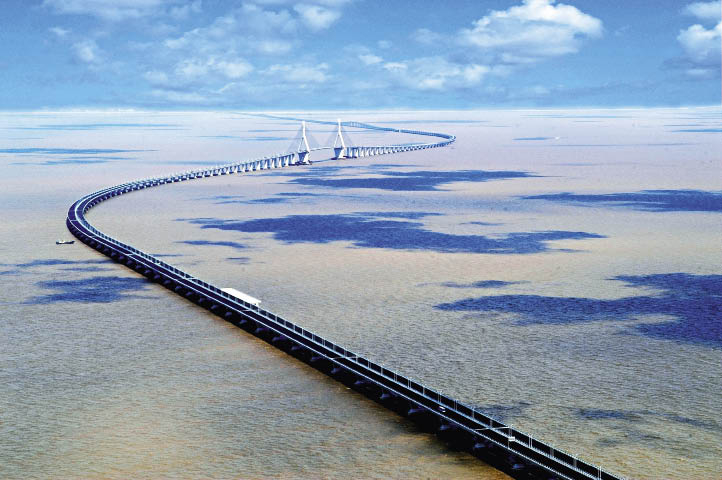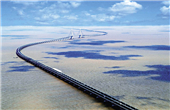Gao Zongyu: Engineer and Designer of World-class Bridges
China Today by Zhou Lin, October 13, 2016 Adjust font size:
Span the Future
Gao Zongyu regards innovation as an eternal theme in China’s bridge design and building sector. “During the 1950-1960s, our aim was to learn from foreign countries in order to build our own bridges. When we built the Wuhan Yangtze River Bridge, Chairman Mao Zedong visited the site three times. On each occasion he would ask Chinese engineers whether they had understood and learned the core technology from Soviet specialists.” Nowadays, China’s bridge technology has developed so fast that, on the basis of safety, quality, and cost-saving, Chinese engineers attach most importance to durability, low-carbon, and environment-friendly materials, and the application of information technologies.
The cable-stayed structure software system that Gao Zongyu developed in the 1990s has been consistently upgraded to this day, “from designing small bridges to bigger ones; from simplified to detailed calculations; and from static to dynamic analyses.”
When Gao Zongyu designed the Qingzhou Minjiang River Bridge in 1998, the 605-meter-long main span bridge was topmost among the world’s steel-concrete composite cable-stayed bridges. Gao’s team took one year to develop a new software through which to make the precise computations that eventually reduced the steel products needed by 20 percent. They thus saved RMB 30 million in construction funds.

The 32-km-long East China Sea Bridge – China’s first cross-sea bridge.
In 2001, having designed China’s first cross-sea bridge – the East China Sea Bridge – Gao Zongyu faced the challenges of the highly corrosive nature of brine and the strong gales that buffeted the site for six months of the year. He boldly proposed prefabricating on land the 70-meter-span concrete box girder between two main bridge piers and transporting by special ferry each 2,000-ton girder and assembling them at sea. He initially put forward the concept of a “precast, integrity, factor” in bridge building, and at the same time increasing construction efficiency. The 32.5-km-long East China Sea Bridge was eventually completed in less than four years.
The rapid development of China’s high-speed railways in the new century forced Gao Zongyu to devote himself to research into long-span bridges incorporating high-speed railways running at more than 200 km per hour. Gao Zongyu led the design of both Wuhan Tianxingzhou Bridge and Zhengzhou Yellow River Bridge, on the Beijing-Guangzhou High-speed Railway route. The 504-meter-long Tianxingzhou Bridge was awarded the George S. Richardson Medal by the 27th International Bridge Conference in 2010.
Looking back on Gao Zongyu’s career, innovative thinking brought him countless achievements. He has won 20 or more awards at home and abroad, including two George S. Richardson Medals, six National Prizes for Science & Technology Progress, one National Excellent Engineering Design Award, and the 10th Zhan Tianyou Railway Science & Technology Award. He also has 12 patents to his name, has published 30-plus papers, and accomplished the construction of 24 masterpiece bridges, the most distant the Mohammed VI Bridge in Morocco.
Born in 1964, Gao Zongyu has specific goals to accomplish before retiring: Firstly, he would like to design China’s three great cross-sea bridges over the Qiong-zhou Strait, Bohai Strait, and Taiwan Strait; second, he wants China’s bridge engineers to participate in construction of the Belt and Road Initiative in other countries. They may then compete with their Western peers on the global market in such areas as bridge design, building, research, and consultation.

